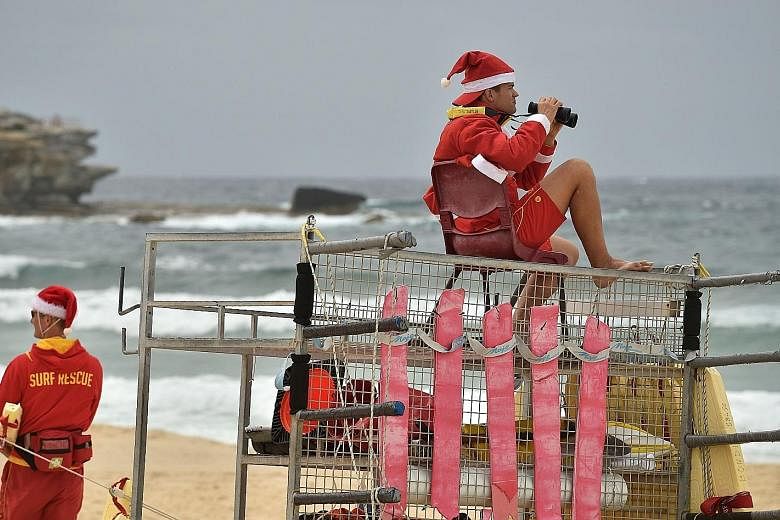With beaches and waterways packed for the Australian summer, the authorities have warned of the risk of drowning, mainly for international visitors and Asian students.
So far, 29 fatal drownings have been recorded across Australia since Dec 1 last year.
This includes 22-year-old Indian student Ravneet Singh Gill, who drowned on Christmas Day at sea off Duranbah, a beach in northern New South Wales.
The business student at Southern Cross University drowned after a wave dragged him into the water, and he got caught in a current.
"The water was only waist high and there was a wave... and he and his friends were trying to come out of the water but they could not - the water was pulling them back," said Mr Gill's friend, Mr Manjit Boparai, the Gold Coast Bulletin reported.
The growing number of drowning deaths recently prompted Prime Minister Malcolm Turnbull to issue a warning about beach and water safety.
The authorities noted two specific dangers - the risk for foreigners, who often lack swimming skills and familiarity with Australian beach conditions, and the risk, which is often underrated, of drowning in rivers and lakes.
The Royal Life Saving Society said foreigners, particularly students, were a high-risk group who needed to take extra care and familiarise themselves with safety rules.
"More international students are coming from countries across Asia, some of which have high rates of drowning, and where people are likely to have low levels of swimming and water safety ability," said Royal Life Saving Society head Justin Scarr, speaking to ABC Radio.
According to figures compiled by the society, 291 people drowned in Australian waters last year. Of these, 20 were overseas visitors and eight were students. Eight of the tourists who died were from Asia.
A few universities have started water safety programmes, and are offering free swimming lessons to international students. The programmes include lessons on beach safety, such as the need to swim between red and yellow flags that mark the patrolled area of beaches.
Students are also taught how to spot and survive rips or dangerous currents, to call for help when in trouble, and never to try to swim against the current.
But the lessons are not always compulsory, and are also often not available in some smaller colleges and universities.
Associate Professor Rob Brander, from the University of New South Wales, said the programmes should be compulsory for all foreign students.
He said: "We don't get large numbers of people turning up because they are largely not interested, when there are so many other things going on after their arrival.
"And while most students are not that interested in beach safety, at some point, they are likely to visit a beach and so, are at great risk.
"Most of them also do not understand or are not aware of how dangerous our surf conditions can be, and many swim on unpatrolled beaches, oblivious to the hazards."
Mr Turnbull visited Sydney's popular Bondi beach on Monday, and announced A$3 million (S$3.1 million) in funding for swimming safety programmes. He also highlighted the need to assist foreigners, citing his own experience as a volunteer lifeguard in Bondi.
He said: "I remember, as a young lifesaver here, helping people who had recently come to Australia and weren't used to the different swimming environment here.
"We've got to make sure that whenever there is a vulnerability in any community group - lack of knowledge, lack of swimming expertise, lack of awareness - that it is addressed."
The other recent warning by the Royal Life Saving Society is on the risk of drowning in inland rivers and lakes.
Somewhat surprisingly, these waterways have more deaths each year, compared with beaches. About 23 per cent of drownings last year were at rivers, creeks and streams, compared with 17 per cent at beaches, and 10 per cent in lakes, lagoons and dams.
Experts said rivers can often appear deceptively tranquil despite having strong currents. They can also be more shallow than they appear, leading people to dive in and hit the bottom.
There could also be hidden dangers such as tree branches or icy cold patches of water.
The riskiest rivers have been named as the Murray River in south-east Australia, the Yarra River in Melbourne, the Brisbane River in Brisbane, the Hawkesbury River north of Sydney, and the Swan River in Perth.
Alcohol is often a factor, and has been cited in about 41 per cent of river drowning victims.

